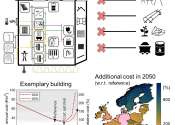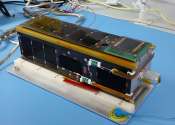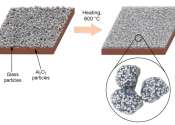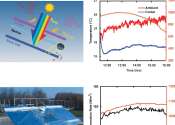Sunlight, in the broad sense, is the total spectrum of the electromagnetic radiation given off by the Sun. On Earth, sunlight is filtered through the atmosphere, and the solar radiation is obvious as daylight when the Sun is above the horizon. Near the poles in summer, the days are longer and the nights are shorter or non-existent. In the winter at the poles the nights are longer and for some periods of time, sunlight may not occur at all. When the direct radiation is not blocked by clouds, it is experienced as sunshine, a combination of bright light and heat. Radiant heat directly produced by the radiation of the sun is different from the increase in atmospheric temperature due to the radiative heating of the atmosphere by the sun's radiation. Sunlight may be recorded using a sunshine recorder, pyranometer or pyrheliometer. Sunlight takes about 8.3 minutes to reach the Earth. The World Meteorological Organization defines sunshine as direct irradiance from the Sun measured on the ground of at least 120 watts per square metre.
Direct sunlight has a luminous efficacy of about 93 lumens per watt of radiant flux, which includes infrared, visible, and ultra-violet light. Bright sunlight provides luminance of approximately 100,000 candela per square meter at the Earth's surface.
Sunlight is a key factor in photosynthesis, a process crucially important for life on Earth.









